Agriculture
Environmental Monitoring
Urban Planning
Disaster Management
Transportation
Active Sensing
Passive Sensing
Aerial Remote Sensing
Satellite Remote Sensing
Ground-Based Remote Sensing
Government
Commercial
Military
Research Institutions
Satellites
Drones
Aircraft
Ground Stations
North America
Europe
South America
Asia Pacific
Middle East and Africa
North America Outlook (USD Billion, 2019-2035)
North America Remote Sensing Technology Market by Application Type
Agriculture
Environmental Monitoring
Urban Planning
Disaster Management
Transportation
North America Remote Sensing Technology Market by Technology Type
Active Sensing
Passive Sensing
Aerial Remote Sensing
Satellite Remote Sensing
Ground-Based Remote Sensing
North America Remote Sensing Technology Market by End Use Type
Government
Commercial
Military
Research Institutions
North America Remote Sensing Technology Market by Platform Type
Satellites
Drones
Aircraft
Ground Stations
North America Remote Sensing Technology Market by Regional Type
US
Canada
US Outlook (USD Billion, 2019-2035)
US Remote Sensing Technology Market by Application Type
Agriculture
Environmental Monitoring
Urban Planning
Disaster Management
Transportation
US Remote Sensing Technology Market by Technology Type
Active Sensing
Passive Sensing
Aerial Remote Sensing
Satellite Remote Sensing
Ground-Based Remote Sensing
US Remote Sensing Technology Market by End Use Type
Government
Commercial
Military
Research Institutions
US Remote Sensing Technology Market by Platform Type
Satellites
Drones
Aircraft
Ground Stations
CANADA Outlook (USD Billion, 2019-2035)
CANADA Remote Sensing Technology Market by Application Type
Agriculture
Environmental Monitoring
Urban Planning
Disaster Management
Transportation
CANADA Remote Sensing Technology Market by Technology Type
Active Sensing
Passive Sensing
Aerial Remote Sensing
Satellite Remote Sensing
Ground-Based Remote Sensing
CANADA Remote Sensing Technology Market by End Use Type
Government
Commercial
Military
Research Institutions
CANADA Remote Sensing Technology Market by Platform Type
Satellites
Drones
Aircraft
Ground Stations
Europe Outlook (USD Billion, 2019-2035)
Europe Remote Sensing Technology Market by Application Type
Agriculture
Environmental Monitoring
Urban Planning
Disaster Management
Transportation
Europe Remote Sensing Technology Market by Technology Type
Active Sensing
Passive Sensing
Aerial Remote Sensing
Satellite Remote Sensing
Ground-Based Remote Sensing
Europe Remote Sensing Technology Market by End Use Type
Government
Commercial
Military
Research Institutions
Europe Remote Sensing Technology Market by Platform Type
Satellites
Drones
Aircraft
Ground Stations
Europe Remote Sensing Technology Market by Regional Type
Germany
UK
France
Russia
Italy
Spain
Rest of Europe
GERMANY Outlook (USD Billion, 2019-2035)
GERMANY Remote Sensing Technology Market by Application Type
Agriculture
Environmental Monitoring
Urban Planning
Disaster Management
Transportation
GERMANY Remote Sensing Technology Market by Technology Type
Active Sensing
Passive Sensing
Aerial Remote Sensing
Satellite Remote Sensing
Ground-Based Remote Sensing
GERMANY Remote Sensing Technology Market by End Use Type
Government
Commercial
Military
Research Institutions
GERMANY Remote Sensing Technology Market by Platform Type
Satellites
Drones
Aircraft
Ground Stations
UK Outlook (USD Billion, 2019-2035)
UK Remote Sensing Technology Market by Application Type
Agriculture
Environmental Monitoring
Urban Planning
Disaster Management
Transportation
UK Remote Sensing Technology Market by Technology Type
Active Sensing
Passive Sensing
Aerial Remote Sensing
Satellite Remote Sensing
Ground-Based Remote Sensing
UK Remote Sensing Technology Market by End Use Type
Government
Commercial
Military
Research Institutions
UK Remote Sensing Technology Market by Platform Type
Satellites
Drones
Aircraft
Ground Stations
FRANCE Outlook (USD Billion, 2019-2035)
FRANCE Remote Sensing Technology Market by Application Type
Agriculture
Environmental Monitoring
Urban Planning
Disaster Management
Transportation
FRANCE Remote Sensing Technology Market by Technology Type
Active Sensing
Passive Sensing
Aerial Remote Sensing
Satellite Remote Sensing
Ground-Based Remote Sensing
FRANCE Remote Sensing Technology Market by End Use Type
Government
Commercial
Military
Research Institutions
FRANCE Remote Sensing Technology Market by Platform Type
Satellites
Drones
Aircraft
Ground Stations
RUSSIA Outlook (USD Billion, 2019-2035)
RUSSIA Remote Sensing Technology Market by Application Type
Agriculture
Environmental Monitoring
Urban Planning
Disaster Management
Transportation
RUSSIA Remote Sensing Technology Market by Technology Type
Active Sensing
Passive Sensing
Aerial Remote Sensing
Satellite Remote Sensing
Ground-Based Remote Sensing
RUSSIA Remote Sensing Technology Market by End Use Type
Government
Commercial
Military
Research Institutions
RUSSIA Remote Sensing Technology Market by Platform Type
Satellites
Drones
Aircraft
Ground Stations
ITALY Outlook (USD Billion, 2019-2035)
ITALY Remote Sensing Technology Market by Application Type
Agriculture
Environmental Monitoring
Urban Planning
Disaster Management
Transportation
ITALY Remote Sensing Technology Market by Technology Type
Active Sensing
Passive Sensing
Aerial Remote Sensing
Satellite Remote Sensing
Ground-Based Remote Sensing
ITALY Remote Sensing Technology Market by End Use Type
Government
Commercial
Military
Research Institutions
ITALY Remote Sensing Technology Market by Platform Type
Satellites
Drones
Aircraft
Ground Stations
SPAIN Outlook (USD Billion, 2019-2035)
SPAIN Remote Sensing Technology Market by Application Type
Agriculture
Environmental Monitoring
Urban Planning
Disaster Management
Transportation
SPAIN Remote Sensing Technology Market by Technology Type
Active Sensing
Passive Sensing
Aerial Remote Sensing
Satellite Remote Sensing
Ground-Based Remote Sensing
SPAIN Remote Sensing Technology Market by End Use Type
Government
Commercial
Military
Research Institutions
SPAIN Remote Sensing Technology Market by Platform Type
Satellites
Drones
Aircraft
Ground Stations
REST OF EUROPE Outlook (USD Billion, 2019-2035)
REST OF EUROPE Remote Sensing Technology Market by Application Type
Agriculture
Environmental Monitoring
Urban Planning
Disaster Management
Transportation
REST OF EUROPE Remote Sensing Technology Market by Technology Type
Active Sensing
Passive Sensing
Aerial Remote Sensing
Satellite Remote Sensing
Ground-Based Remote Sensing
REST OF EUROPE Remote Sensing Technology Market by End Use Type
Government
Commercial
Military
Research Institutions
REST OF EUROPE Remote Sensing Technology Market by Platform Type
Satellites
Drones
Aircraft
Ground Stations
APAC Outlook (USD Billion, 2019-2035)
APAC Remote Sensing Technology Market by Application Type
Agriculture
Environmental Monitoring
Urban Planning
Disaster Management
Transportation
APAC Remote Sensing Technology Market by Technology Type
Active Sensing
Passive Sensing
Aerial Remote Sensing
Satellite Remote Sensing
Ground-Based Remote Sensing
APAC Remote Sensing Technology Market by End Use Type
Government
Commercial
Military
Research Institutions
APAC Remote Sensing Technology Market by Platform Type
Satellites
Drones
Aircraft
Ground Stations
APAC Remote Sensing Technology Market by Regional Type
China
India
Japan
South Korea
Malaysia
Thailand
Indonesia
Rest of APAC
CHINA Outlook (USD Billion, 2019-2035)
CHINA Remote Sensing Technology Market by Application Type
Agriculture
Environmental Monitoring
Urban Planning
Disaster Management
Transportation
CHINA Remote Sensing Technology Market by Technology Type
Active Sensing
Passive Sensing
Aerial Remote Sensing
Satellite Remote Sensing
Ground-Based Remote Sensing
CHINA Remote Sensing Technology Market by End Use Type
Government
Commercial
Military
Research Institutions
CHINA Remote Sensing Technology Market by Platform Type
Satellites
Drones
Aircraft
Ground Stations
INDIA Outlook (USD Billion, 2019-2035)
INDIA Remote Sensing Technology Market by Application Type
Agriculture
Environmental Monitoring
Urban Planning
Disaster Management
Transportation
INDIA Remote Sensing Technology Market by Technology Type
Active Sensing
Passive Sensing
Aerial Remote Sensing
Satellite Remote Sensing
Ground-Based Remote Sensing
INDIA Remote Sensing Technology Market by End Use Type
Government
Commercial
Military
Research Institutions
INDIA Remote Sensing Technology Market by Platform Type
Satellites
Drones
Aircraft
Ground Stations
JAPAN Outlook (USD Billion, 2019-2035)
JAPAN Remote Sensing Technology Market by Application Type
Agriculture
Environmental Monitoring
Urban Planning
Disaster Management
Transportation
JAPAN Remote Sensing Technology Market by Technology Type
Active Sensing
Passive Sensing
Aerial Remote Sensing
Satellite Remote Sensing
Ground-Based Remote Sensing
JAPAN Remote Sensing Technology Market by End Use Type
Government
Commercial
Military
Research Institutions
JAPAN Remote Sensing Technology Market by Platform Type
Satellites
Drones
Aircraft
Ground Stations
SOUTH KOREA Outlook (USD Billion, 2019-2035)
SOUTH KOREA Remote Sensing Technology Market by Application Type
Agriculture
Environmental Monitoring
Urban Planning
Disaster Management
Transportation
SOUTH KOREA Remote Sensing Technology Market by Technology Type
Active Sensing
Passive Sensing
Aerial Remote Sensing
Satellite Remote Sensing
Ground-Based Remote Sensing
SOUTH KOREA Remote Sensing Technology Market by End Use Type
Government
Commercial
Military
Research Institutions
SOUTH KOREA Remote Sensing Technology Market by Platform Type
Satellites
Drones
Aircraft
Ground Stations
MALAYSIA Outlook (USD Billion, 2019-2035)
MALAYSIA Remote Sensing Technology Market by Application Type
Agriculture
Environmental Monitoring
Urban Planning
Disaster Management
Transportation
MALAYSIA Remote Sensing Technology Market by Technology Type
Active Sensing
Passive Sensing
Aerial Remote Sensing
Satellite Remote Sensing
Ground-Based Remote Sensing
MALAYSIA Remote Sensing Technology Market by End Use Type
Government
Commercial
Military
Research Institutions
MALAYSIA Remote Sensing Technology Market by Platform Type
Satellites
Drones
Aircraft
Ground Stations
THAILAND Outlook (USD Billion, 2019-2035)
THAILAND Remote Sensing Technology Market by Application Type
Agriculture
Environmental Monitoring
Urban Planning
Disaster Management
Transportation
THAILAND Remote Sensing Technology Market by Technology Type
Active Sensing
Passive Sensing
Aerial Remote Sensing
Satellite Remote Sensing
Ground-Based Remote Sensing
THAILAND Remote Sensing Technology Market by End Use Type
Government
Commercial
Military
Research Institutions
THAILAND Remote Sensing Technology Market by Platform Type
Satellites
Drones
Aircraft
Ground Stations
INDONESIA Outlook (USD Billion, 2019-2035)
INDONESIA Remote Sensing Technology Market by Application Type
Agriculture
Environmental Monitoring
Urban Planning
Disaster Management
Transportation
INDONESIA Remote Sensing Technology Market by Technology Type
Active Sensing
Passive Sensing
Aerial Remote Sensing
Satellite Remote Sensing
Ground-Based Remote Sensing
INDONESIA Remote Sensing Technology Market by End Use Type
Government
Commercial
Military
Research Institutions
INDONESIA Remote Sensing Technology Market by Platform Type
Satellites
Drones
Aircraft
Ground Stations
REST OF APAC Outlook (USD Billion, 2019-2035)
REST OF APAC Remote Sensing Technology Market by Application Type
Agriculture
Environmental Monitoring
Urban Planning
Disaster Management
Transportation
REST OF APAC Remote Sensing Technology Market by Technology Type
Active Sensing
Passive Sensing
Aerial Remote Sensing
Satellite Remote Sensing
Ground-Based Remote Sensing
REST OF APAC Remote Sensing Technology Market by End Use Type
Government
Commercial
Military
Research Institutions
REST OF APAC Remote Sensing Technology Market by Platform Type
Satellites
Drones
Aircraft
Ground Stations
South America Outlook (USD Billion, 2019-2035)
South America Remote Sensing Technology Market by Application Type
Agriculture
Environmental Monitoring
Urban Planning
Disaster Management
Transportation
South America Remote Sensing Technology Market by Technology Type
Active Sensing
Passive Sensing
Aerial Remote Sensing
Satellite Remote Sensing
Ground-Based Remote Sensing
South America Remote Sensing Technology Market by End Use Type
Government
Commercial
Military
Research Institutions
South America Remote Sensing Technology Market by Platform Type
Satellites
Drones
Aircraft
Ground Stations
South America Remote Sensing Technology Market by Regional Type
Brazil
Mexico
Argentina
Rest of South America
BRAZIL Outlook (USD Billion, 2019-2035)
BRAZIL Remote Sensing Technology Market by Application Type
Agriculture
Environmental Monitoring
Urban Planning
Disaster Management
Transportation
BRAZIL Remote Sensing Technology Market by Technology Type
Active Sensing
Passive Sensing
Aerial Remote Sensing
Satellite Remote Sensing
Ground-Based Remote Sensing
BRAZIL Remote Sensing Technology Market by End Use Type
Government
Commercial
Military
Research Institutions
BRAZIL Remote Sensing Technology Market by Platform Type
Satellites
Drones
Aircraft
Ground Stations
MEXICO Outlook (USD Billion, 2019-2035)
MEXICO Remote Sensing Technology Market by Application Type
Agriculture
Environmental Monitoring
Urban Planning
Disaster Management
Transportation
MEXICO Remote Sensing Technology Market by Technology Type
Active Sensing
Passive Sensing
Aerial Remote Sensing
Satellite Remote Sensing
Ground-Based Remote Sensing
MEXICO Remote Sensing Technology Market by End Use Type
Government
Commercial
Military
Research Institutions
MEXICO Remote Sensing Technology Market by Platform Type
Satellites
Drones
Aircraft
Ground Stations
ARGENTINA Outlook (USD Billion, 2019-2035)
ARGENTINA Remote Sensing Technology Market by Application Type
Agriculture
Environmental Monitoring
Urban Planning
Disaster Management
Transportation
ARGENTINA Remote Sensing Technology Market by Technology Type
Active Sensing
Passive Sensing
Aerial Remote Sensing
Satellite Remote Sensing
Ground-Based Remote Sensing
ARGENTINA Remote Sensing Technology Market by End Use Type
Government
Commercial
Military
Research Institutions
ARGENTINA Remote Sensing Technology Market by Platform Type
Satellites
Drones
Aircraft
Ground Stations
REST OF SOUTH AMERICA Outlook (USD Billion, 2019-2035)
REST OF SOUTH AMERICA Remote Sensing Technology Market by Application Type
Agriculture
Environmental Monitoring
Urban Planning
Disaster Management
Transportation
REST OF SOUTH AMERICA Remote Sensing Technology Market by Technology Type
Active Sensing
Passive Sensing
Aerial Remote Sensing
Satellite Remote Sensing
Ground-Based Remote Sensing
REST OF SOUTH AMERICA Remote Sensing Technology Market by End Use Type
Government
Commercial
Military
Research Institutions
REST OF SOUTH AMERICA Remote Sensing Technology Market by Platform Type
Satellites
Drones
Aircraft
Ground Stations
MEA Outlook (USD Billion, 2019-2035)
MEA Remote Sensing Technology Market by Application Type
Agriculture
Environmental Monitoring
Urban Planning
Disaster Management
Transportation
MEA Remote Sensing Technology Market by Technology Type
Active Sensing
Passive Sensing
Aerial Remote Sensing
Satellite Remote Sensing
Ground-Based Remote Sensing
MEA Remote Sensing Technology Market by End Use Type
Government
Commercial
Military
Research Institutions
MEA Remote Sensing Technology Market by Platform Type
Satellites
Drones
Aircraft
Ground Stations
MEA Remote Sensing Technology Market by Regional Type
GCC Countries
South Africa
Rest of MEA
GCC COUNTRIES Outlook (USD Billion, 2019-2035)
GCC COUNTRIES Remote Sensing Technology Market by Application Type
Agriculture
Environmental Monitoring
Urban Planning
Disaster Management
Transportation
GCC COUNTRIES Remote Sensing Technology Market by Technology Type
Active Sensing
Passive Sensing
Aerial Remote Sensing
Satellite Remote Sensing
Ground-Based Remote Sensing
GCC COUNTRIES Remote Sensing Technology Market by End Use Type
Government
Commercial
Military
Research Institutions
GCC COUNTRIES Remote Sensing Technology Market by Platform Type
Satellites
Drones
Aircraft
Ground Stations
SOUTH AFRICA Outlook (USD Billion, 2019-2035)
SOUTH AFRICA Remote Sensing Technology Market by Application Type
Agriculture
Environmental Monitoring
Urban Planning
Disaster Management
Transportation
SOUTH AFRICA Remote Sensing Technology Market by Technology Type
Active Sensing
Passive Sensing
Aerial Remote Sensing
Satellite Remote Sensing
Ground-Based Remote Sensing
SOUTH AFRICA Remote Sensing Technology Market by End Use Type
Government
Commercial
Military
Research Institutions
SOUTH AFRICA Remote Sensing Technology Market by Platform Type
Satellites
Drones
Aircraft
Ground Stations
REST OF MEA Outlook (USD Billion, 2019-2035)
REST OF MEA Remote Sensing Technology Market by Application Type
Agriculture
Environmental Monitoring
Urban Planning
Disaster Management
Transportation
REST OF MEA Remote Sensing Technology Market by Technology Type
Active Sensing
Passive Sensing
Aerial Remote Sensing
Satellite Remote Sensing
Ground-Based Remote Sensing
REST OF MEA Remote Sensing Technology Market by End Use Type
Government
Commercial
Military
Research Institutions
REST OF MEA Remote Sensing Technology Market by Platform Type
Satellites
Drones
Aircraft
Ground Stations

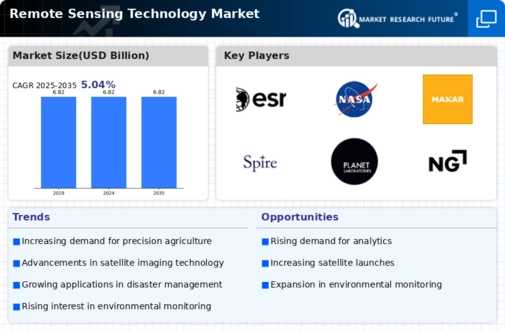
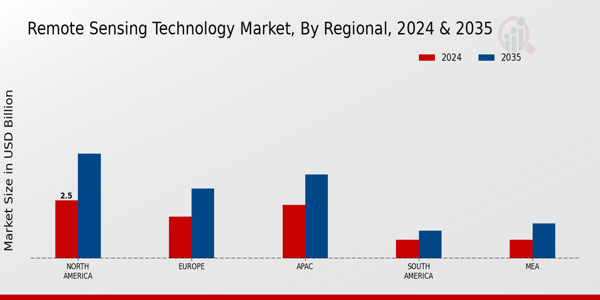


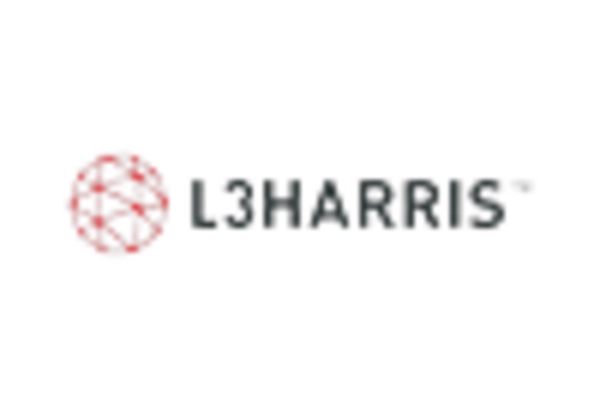
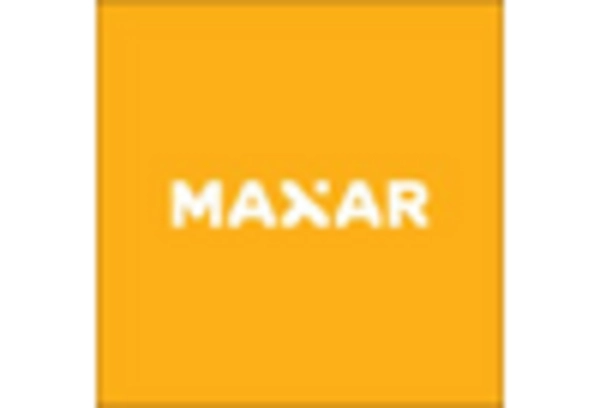

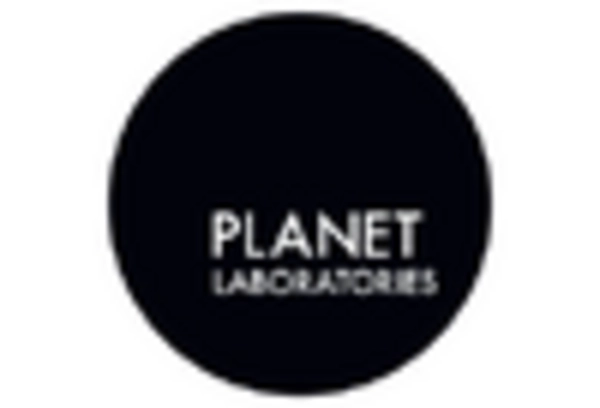

Leave a Comment